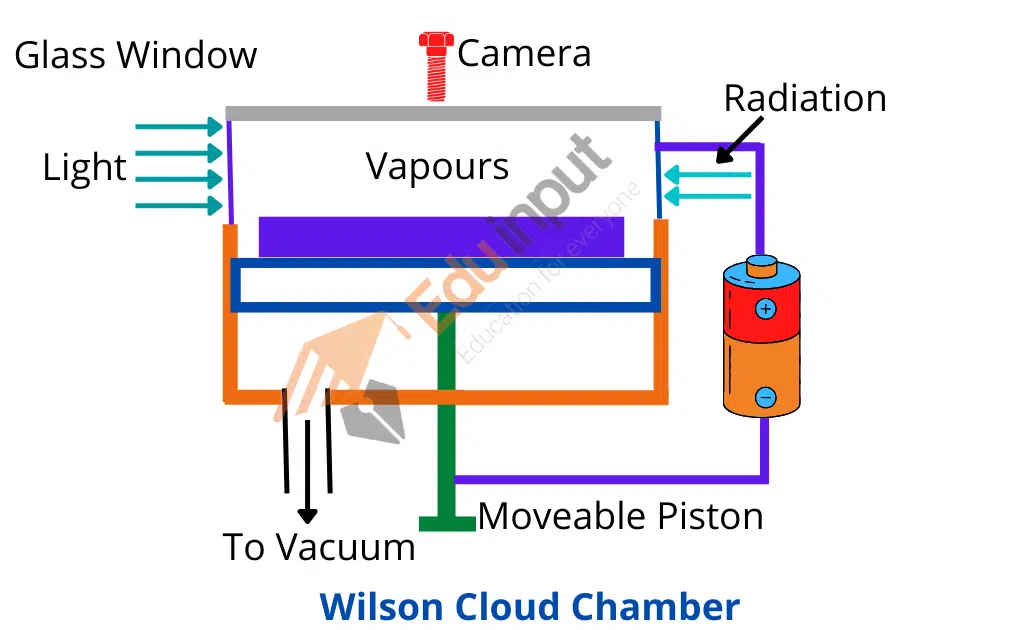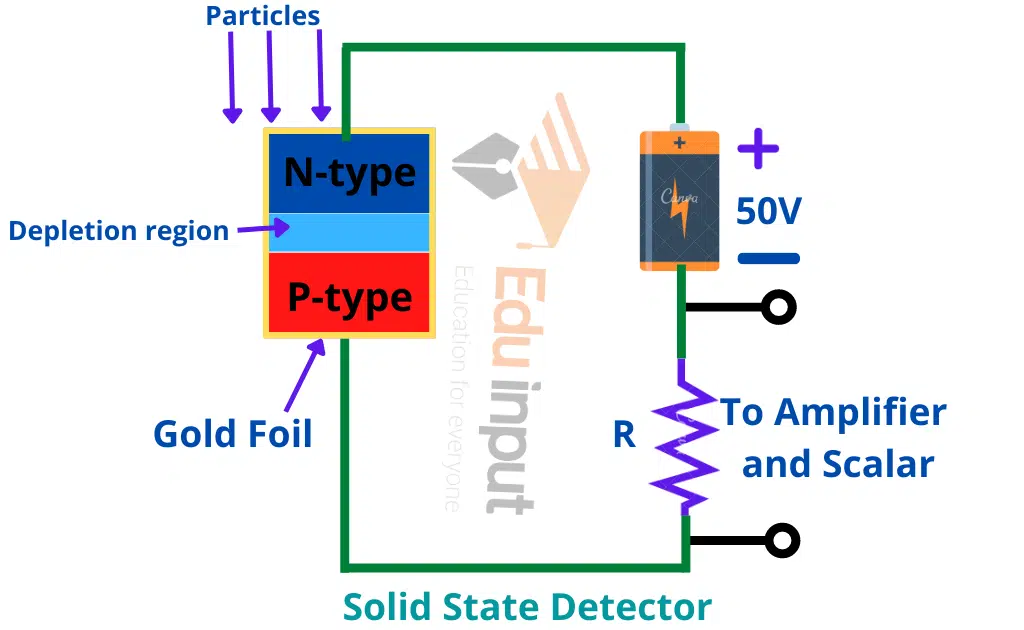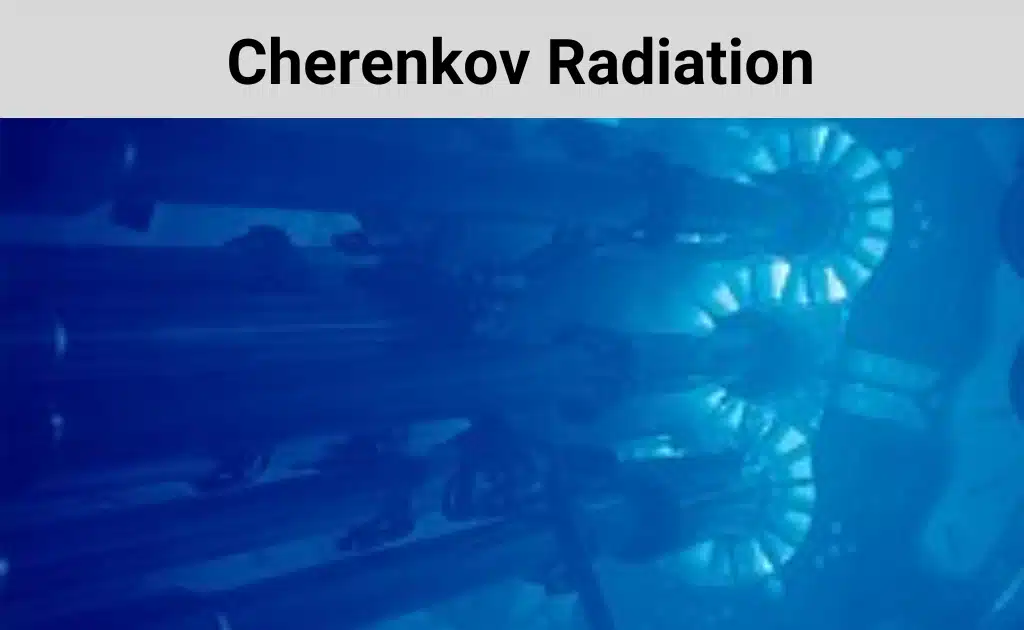Wilson Cloud Chamber | Solid State Detectors
Wilson cloud chamber and solid-state detector are radiation detectors. These are used to detect the presence of radiations. Uses of radiation for well being of humans have increased a lot. But these radiations are very dangerous too for humans. So detectors are used for safety purposes.
Wilson Cloud Chamber
Wilson cloud chamber is a device that shows the visible path of an ionizing particle. It makes use of the fact that supersaturated vapors condense preferentially on ions.
If an ionizing particle passes through a region in which cloud droplets are about to form, the droplets will form first along the particle’s path, showing the path as a trail of droplets.
Wilson cloud chamber construction
The apparatus consists of a cylindrical glass chamber closed at the upper end by a glass window and at the lower end by a movable piston.

A black felt pad soaked in alcohol is placed on a metal plate inside the chamber.
Wilson Cloud Chamber Working
The air soon becomes saturated with alcohol vapors. A rapid expansion is produced by pulling quickly the piston of the bicycle pump and having the leather washer reversed so that it removes air.
The sudden cooling resulting from adiabatic expansion helps to form supersaturated vapors. As radiation passes through the chamber, ions are produced along the path. The tiny droplets of moisture condense about these ions and form vapor tracks showing the path of the radiation.
These are the atomic version of the ice crystals left in the sky by a jet plane when suitable conditions exist. The fog tracks are illuminated with a lamp and may be seen or photographed through the glass window.
- The α-particles leave a thick, straight, and continuous track due to the intense ionization produced.
- β-particles form thin and discontinuous tracks extending in an irregular manner.
- γ-rays leave no definite tracks along the path.
The length of the cloud tracks has been found proportional to the energy of the incident particle.
The high potential difference of the order of 1 kV between the top and bottom of the chamber provides an electric field that clears away all the unwanted ions from the chamber to make it ready for use.
The tracks seen are, therefore, those of rays that pass the chamber as the expansion occurs.
The chamber may be placed in a strong magnetic field which will bend the paths providing information about the charge, mass, and energy of the radiating particle. In this way, it has helped in the discovery of many new particles.
Solid State Detector
A solid-state detector is a specially designed PN Junction operating under a reversed bias in which electron-hole pairs are produced by the incident radiation to cause a current pulse to flow through the external circuit.
Construction of solid-state detector
The detector is made from p-type silicon or germanium. An n-type thin layer is produced by doping the top surface with donor-type impurity.

The top and bottom surfaces are coated, with a thin layer of gold to make good conducting contact with an external circuit. The combined thickness of the type and gold layer absorbs so less energy from the incident particle that the junction may be assumed to be situated at the front surface.
This is known as the surface barrier type detector
Working of Solid State Detector:
A reverse bias is applied through the two conducting layers of gold. This enlarges the charge-free region around the junction called the depletion region. Normally no current flows through the circuit.
When an incident particle penetrates through the depletion region, it produces electron-hole pairs. These mobile charge carriers move towards the respective sides due to the applied electric field.
This gives rise to an electric current in the external circuit due to which a pulse of voltage is generated across the resistance R.
This pulse is amplified and registered by a scalar unit. The size of the pulse is found proportional to the energy absorbed by the incident particle.
The energy needed to produce an electron-hole pair is about 3 eV to 4 eV which makes the device useful for detecting low-energy particles.
The collection time of Electrons and holes is much less than gas-filled counters and hence a solid-state detector can count very fast.
It is much smaller in size than any other detector and operates at low voltage. The above-mentioned type detector is used for electing α or β-particles but a specially designed device can be used for γ-rays.
Related FAQs
What is Wilson Cloud Chamber?
It is a device that shows the visible path of an ionizing particle. It makes use of the fact that supersaturated vapors condense preferentially on ions.
What is a Solid state Detector?
A solid-state detector is a specially designed PN Junction operating under a reversed bias in which electron-hole pairs are produced by the incident radiation to cause a current pulse to flow through the external circuit.
What are the Advantages of a Solid state detector?
It is much smaller in size than any other detector and operates at low voltage. The above-mentioned type detector is used for electing α or β-particles but a specially designed device can be used for γ-rays.
How much energy is required to detect low-energy particles?
The energy needed to produce an electron-hole pair is about 3 eV to 4 eV which makes the device useful for detecting low-energy particles.
The solid-state detector can count the radiation very fast why?
The collection time of Electrons and holes is much less than gas-filled counters and hence a solid-state detector can count very fas







Leave a Reply